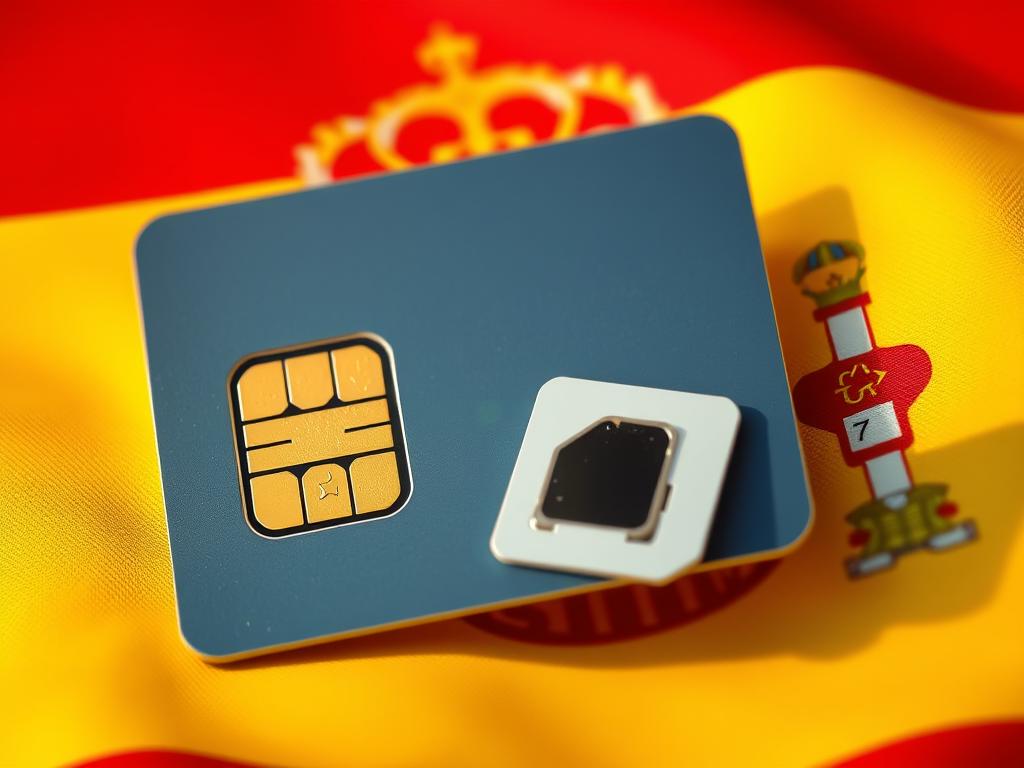Spain eSIM vs Physical SIM: Which Is Better for Digital Nomads?
Exploring Spain as a digital nomad means staying connected is key. Over 2 million expats and remote workers live here. They need reliable mobile data for work and daily life.
Choosing a mobile solution that’s easy and affordable is important. The debate between eSIM and physical SIM cards is growing.
When picking the best SIM for digital nomads in Spain, think about ease, data plans, and coverage. This article will help you understand the good and bad of each. It aims to guide you in choosing the right mobile option for Spain.
Understanding Mobile Connectivity Options in Spain
Digital nomadism is on the rise in Spain. The country’s rich culture, pleasant climate, and modern infrastructure make it perfect for remote work. This is why many digital nomads choose Spain as their new home.
The Digital Nomad Landscape in Spain
Spain is now a top spot for digital nomads. Its cities and coastal areas are lively and welcoming. People from all over come here to work remotely, creating a diverse community.
This community needs fast, reliable, and secure internet. They rely on mobile networks to stay connected and productive.
Mobile Network Infrastructure Overview
Spain has a strong mobile network, thanks to carriers like Movistar, Vodafone, and Orange. They cover most of the country with 4G and 5G networks. This means digital nomads can enjoy fast internet wherever they go.
| Carrier | 4G Coverage | 5G Coverage |
|---|---|---|
| Movistar | 99% | 80% |
| Vodafone | 98% | 75% |
| Orange | 97% | 70% |
Importance of Reliable Connectivity for Remote Work
For digital nomads, reliable internet is key. It lets them work smoothly from anywhere. They can talk to clients, join video calls, and use cloud apps without a hitch.
In Spain, a good mobile connection means you can work from any spot. Whether it’s a co-working space in Madrid or a café in Barcelona. Reliable internet is vital for staying productive and meeting deadlines.
What is an eSIM and How Does It Work?
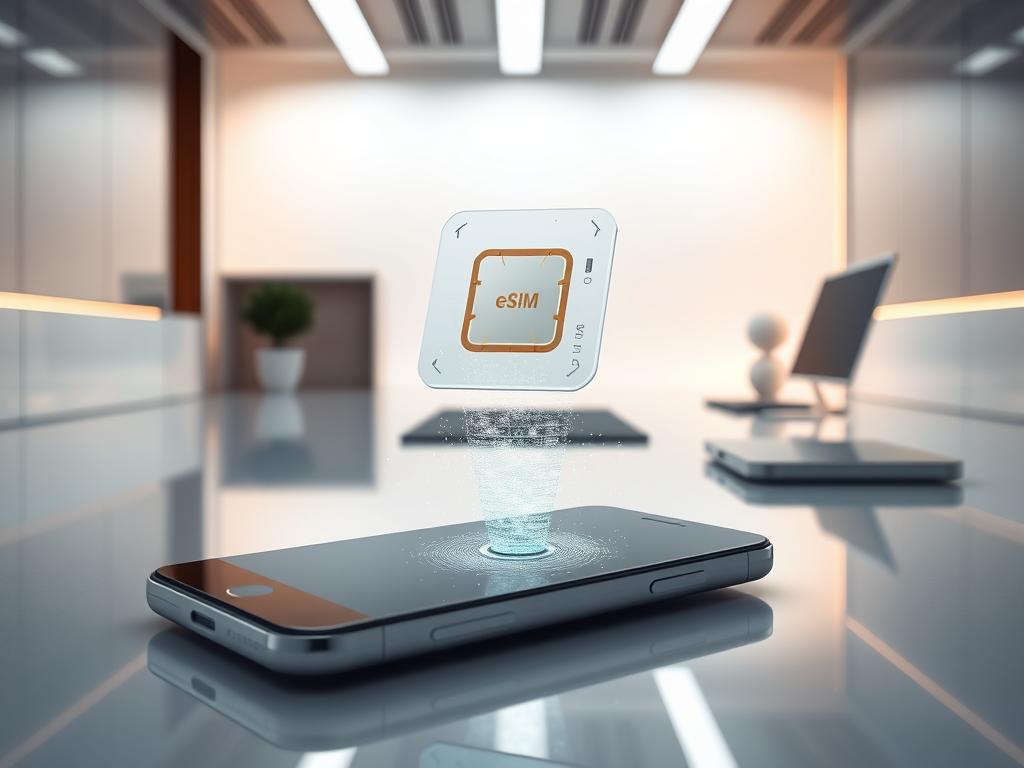
eSIM technology is changing how we stay connected while traveling. An eSIM, or embedded SIM, lets you start a cellular plan without a physical SIM card. It’s a digital SIM that works with your device.
Technical Explanation of eSIM Technology
eSIM technology uses the GSMA (GSM Association) standard for remote SIM setup. This lets your device connect to a network without a physical SIM. The eSIM is part of the device’s circuit board, but you can change its profile remotely.
Key features of eSIM technology include:
- Remote provisioning and management of mobile subscriptions
- Multiple profiles can be stored on a single eSIM
- Profiles can be switched between different carriers or plans
- Enhanced security through secure authentication protocols
Device Compatibility for Spain eSIMs
To use an eSIM in Spain, check if your device is compatible. Many recent smartphones support eSIM, like Apple, Samsung, and Google models. Visit the manufacturer’s website or check your device’s manual to confirm.
Some popular eSIM-compatible devices include:
- Apple iPhone (models XS and later)
- Samsung Galaxy (models S21, S22, and some S20 variants)
- Google Pixel (models 2 and later)
Advantages of eSIM for Travelers
eSIMs are great for travelers, like digital nomads. They offer several benefits:
- Convenience: No need for a physical SIM card or carrier store visits.
- Flexibility: Easy to switch between plans or carriers.
- Space-saving: No extra space needed for a SIM card.
- Multi-profile support: Store profiles for different countries or plans.
For digital nomads in Spain, an eSIM makes staying connected easy. It helps with smooth transitions between places and plans.
Traditional Physical SIM Cards in Spain
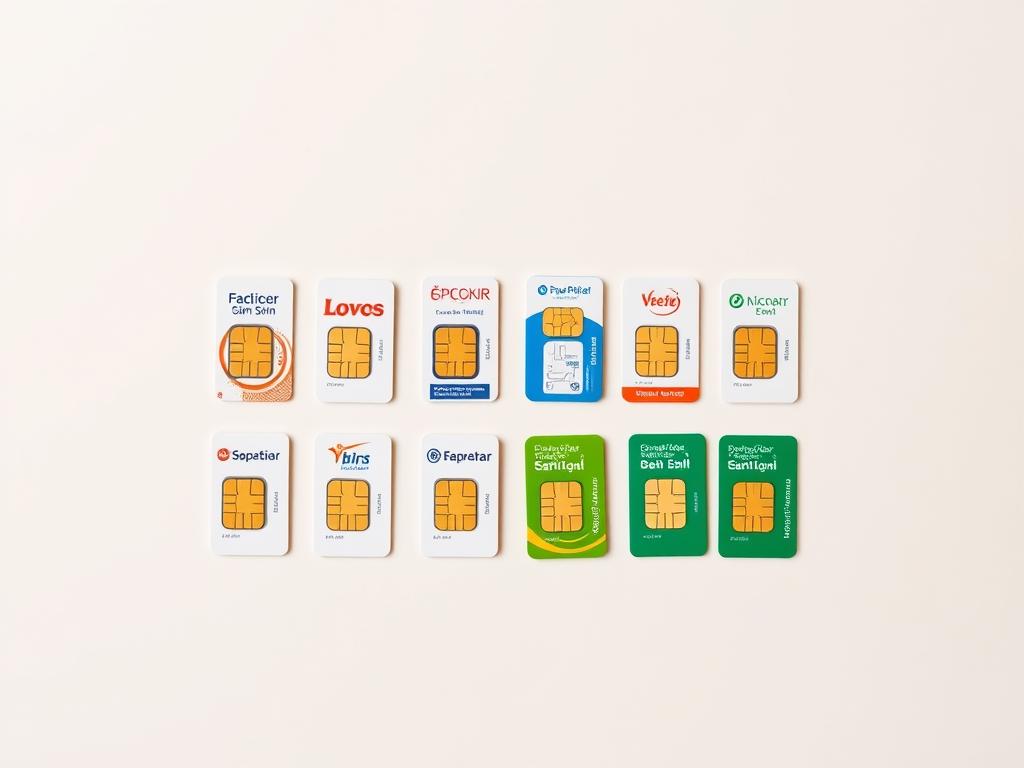
Physical SIM cards are a key part of mobile connectivity in Spain. They offer many benefits, even as eSIM technology grows in popularity. Traditional SIM cards are widely used and supported across the country.
Major Spanish Mobile Carriers
Spain has several major mobile carriers. They offer services for both locals and visitors. The three main carriers are:
- Movistar: Spain’s largest telecom company, Movistar has extensive coverage and various plans.
- Vodafone: Known for its competitive pricing and strong network, Vodafone is a favorite among locals and tourists.
- Orange: Orange offers a range of services, including prepaid and contract options, with a focus on customer service.
These carriers have many retail stores and kiosks across Spain. This makes it easy to buy and activate a physical SIM card.
Types of Physical SIM Cards Available
When choosing a physical SIM card in Spain, you have several options:
- Standard SIM: The traditional size, used in many devices.
- Micro SIM: A smaller version, used in many smartphones.
- Nano SIM: The smallest size, used in most modern smartphones.
Most carriers offer nano SIM cards. This is because nano size is the most common in today’s devices.
Prepaid vs. Contract Options
Physical SIM cards in Spain come in prepaid and contract formats. Each has its own benefits:
- Prepaid SIMs: They offer flexibility and control over spending. You can top up as needed, making them great for short-term visitors or those with changing data needs.
- Contract SIMs: They provide a fixed monthly plan with a set amount of data, calls, and texts. This is better for long-term residents or those with consistent mobile use.
When deciding between prepaid and contract options, think about your stay duration, data needs, and budget. This will help you choose the best option for your time in Spain.
Spain eSIM vs Physical SIM: Direct Comparison for Digital Nomads
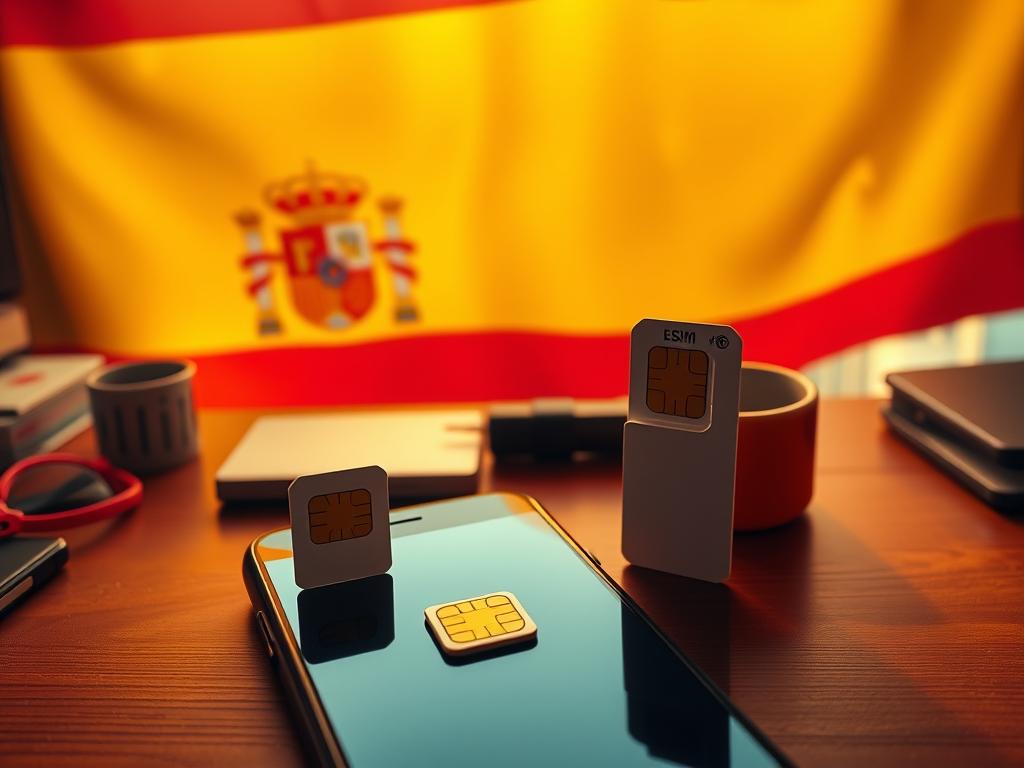
Digital nomads in Spain face a choice between eSIM and physical SIM. It’s important to understand the pros and cons of each. This will help you pick the best option for your remote work needs.
Convenience and Accessibility Factors
eSIMs offer great convenience. You can switch carriers or plans without changing SIM cards. This is perfect for digital nomads who often need to change plans.
Activating an eSIM is easy, done right from your device. No need to visit a store or wait for a SIM to arrive.
Physical SIMs, on the other hand, require you to physically swap SIMs when changing plans. While easy, it can be a hassle, like when traveling. But, they are widely supported by most devices, making them reliable.
Coverage and Network Quality Across Spain
eSIM and physical SIM cards use the same networks in Spain. So, coverage and quality are the same for both. Major carriers like Movistar, Vodafone, and Orange cover the whole country.
When deciding, think about your work needs. In cities with good coverage, either option works. But, if you travel to rural areas, check the carrier’s coverage there.
Cost Comparison for Various Usage Patterns
The cost of eSIM and physical SIMs in Spain depends on your usage. The SIM or eSIM itself is cheap. Most of the cost is in data plans.
| Usage Pattern | eSIM Cost | Physical SIM Cost |
|---|---|---|
| Light User (<5GB) | €10-€20/month | €10-€20/month |
| Moderate User (5-20GB) | €20-€30/month | €20-€30/month |
| Heavy User (>20GB) | €30-€50/month | €30-€50/month |
For digital nomads, the cost difference between eSIM and physical SIM is small. eSIMs offer more flexibility and convenience. This might be worth the extra cost for those who travel a lot.
How to Purchase and Set Up an eSIM for Spain
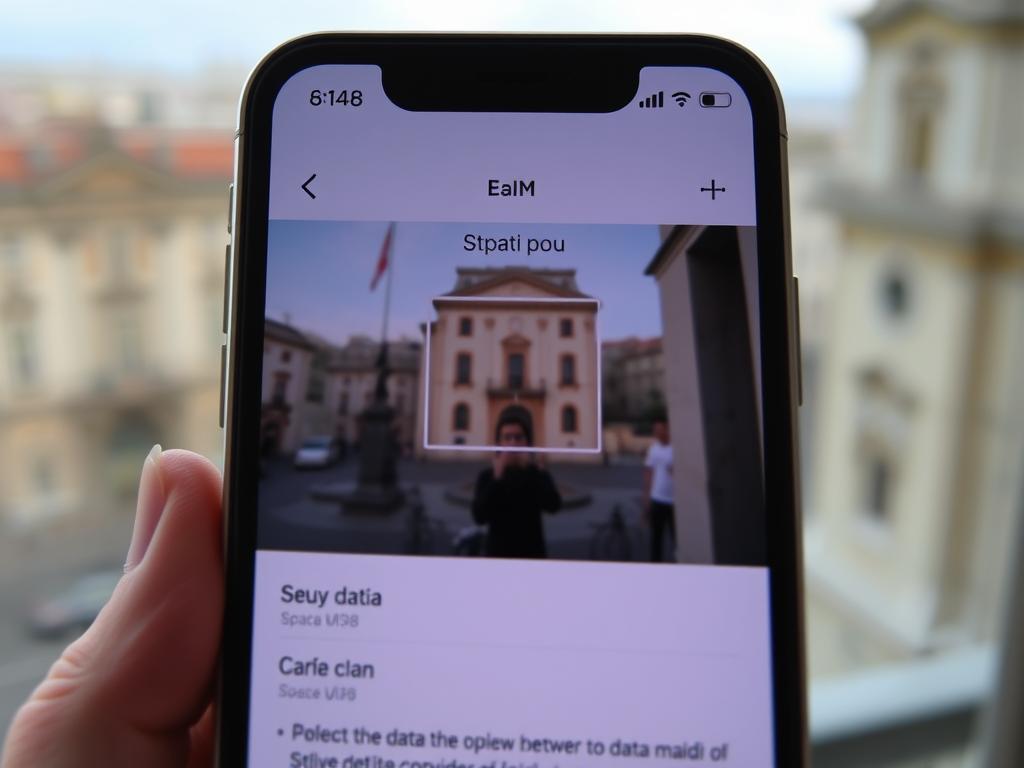
As a digital nomad, getting an eSIM for Spain is simple. With some guidance, you can quickly set up your eSIM. This ensures you stay connected in Spain.
Step-by-Step eSIM Activation Process
Activating an eSIM for Spain is easy:
- Choose a good eSIM provider like Airalo or Holafly for Spain.
- Buy your eSIM online from their website or app.
- Download and install the eSIM on your device as the provider tells you.
- Activate your eSIM by scanning a QR code or entering a code.
After activation, your eSIM is ready. You can manage it in your device’s settings.
Recommended eSIM Providers for Spain
Many providers offer eSIMs for Spain. They cater to different needs and budgets. Here are some top picks:
- Airalo: Known for wide coverage and flexible data plans.
- Holafly: Offers unlimited data and is a favorite among digital nomads.
- Orange: A trusted carrier with eSIM services and reliable coverage.
When picking a provider, think about coverage, data limits, and support. This ensures you get the best for your needs.
Troubleshooting Common eSIM Setup Issues
Setting up an eSIM is usually easy, but some issues might arise. Common problems include:
- Device compatibility: Make sure your device supports eSIM technology.
- Activation failures: Double-check you followed the activation steps and have a stable internet connection.
- Data plan configuration: Ensure your data plan is set up right in your device settings.
If you run into problems, reach out to your eSIM provider’s support. They can help fast.
How to Purchase and Set Up a Physical SIM in Spain
As a digital nomad in Spain, getting a physical SIM card is easy. You can find them at many retailers and carriers across the country. This guide will help you buy and set up a SIM card. This way, you’ll stay connected while in Spain.
Where to Buy Physical SIMs
You can find physical SIM cards in many places in Spain. Here are some options:
- Airport kiosks and carrier stores upon arrival
- Carrier-specific stores like Movistar, Vodafone, and Orange
- Electronic and convenience stores
- Some supermarkets and kiosks in major cities
Major airports like Madrid-Barajas and Barcelona-El Prat have stores and kiosks for SIMs right when you arrive. Carrier stores also offer plans and advice.
Documentation Requirements for Foreigners
To buy a SIM card in Spain, you’ll need a few things:
- Valid passport or national ID card
- Proof of address in Spain (utility bill, rental agreement, or NIE number)
- Some carriers may need a Spanish bank account for payments
Non-EU citizens might need an NIE number. Some carriers have options for tourists or short-term visitors. It’s good to ask about these.
Activation Process and Initial Setup
After buying your SIM card, activation is easy:
- Insert the SIM card into your device
- Follow the carrier’s instructions to activate, which might involve a call or SMS
- Top up your account with credit, using a prepaid voucher or a payment method
Activation times can vary. Some SIMs work right away, while others might take a few hours or until the next business day.
Knowing where to buy SIMs, what documents you need, and how to activate them helps. This ensures a smooth start with your local SIM card in Spain.
Data Plans and Pricing for Digital Nomads
Data plans in Spain offer flexibility for digital nomads. It’s important to understand the options available. Whether you’re staying for a short or long time, finding the right plan is key.
Short-Term vs. Long-Term Options
Choosing a data plan depends on how long you’ll stay in Spain. Short-term options are great for visits under a month. These plans are prepaid and easy to activate or deactivate.
Long-term options are better for extended stays. They often cost less per GB and may include extra perks like international calls or roaming in the EU.
Unlimited Data Considerations and Fair Usage Policies
Unlimited data plans are tempting for constant work needs. But, it’s important to know the fair usage policies. Some providers may slow down your speeds after a certain amount of data.
- Check the fair usage policy to avoid unexpected data speed reductions.
- Understand what is included in the “unlimited” data (e.g., if there are any restrictions on tethering or using the data for streaming).
International Calling and EU Roaming Options
For those needing to call internationally, international calling and EU roaming options are essential. Some plans include these features, making communication across borders easy.
| Provider | International Calling | EU Roaming |
|---|---|---|
| Airalo | Yes, with additional charges | Included in some plans |
| Holafly | No | Yes, unlimited |
| Orange | Yes, with various packages | Yes, depending on the plan |
Special Offers and Digital Nomad-Friendly Plans
Some providers offer special offers and digital nomad-friendly plans. These might include discounts for longer stays, extra data for certain apps, or other perks. These can enhance your experience as a digital nomad in Spain.
When picking a data plan, think about your needs. Consider your stay duration, data needs, and any international calling or roaming requirements. The right plan ensures a productive and connected experience in Spain.
Security and Privacy Considerations
As a digital nomad in Spain, you might worry about your mobile data security. This is true whether you use an eSIM or a physical SIM card. Knowing how secure your mobile connection is important for your digital life. It’s key to understand the security differences between eSIMs and physical SIM cards.
eSIM Security Features and Possible Weaknesses
eSIM technology has many security benefits. For example, remote provisioning and management lower the chance of SIM card loss or theft. But, eSIMs also have new risks, like SIM swapping attacks. These attacks let an attacker take control of your phone number by tricking your carrier.
To avoid these dangers, use strong passwords and two-factor authentication when handling your eSIM. Also, make sure your device and eSIM profile are updated with the latest security fixes.
Physical SIM Security Risks and Advantages
Physical SIM cards have their own set of security risks and benefits. They are more tangible, which can help protect against remote attacks. But, they can also be lost, stolen, or damaged, which could harm your mobile security.
To keep your physical SIM card safe, store it in a secure spot. Be careful when putting it in or taking it out of your device. Also, keep an eye on your account activity to spot any odd behavior.
Data Protection Tips for Digital Nomads
Whether you use an eSIM or a physical SIM card, there are key data protection tips for digital nomads:
- Use a Virtual Private Network (VPN) when using public Wi-Fi.
- Encrypt your data with secure apps and email services.
- Update your devices and apps regularly to stay secure.
- Be careful with public computers or USB charging stations, as they might have malware.
| Security Feature | eSIM | Physical SIM |
|---|---|---|
| Remote Provisioning | Yes | No |
| Risk of Loss/Theft | Low | High |
| SIM Swapping Attacks | Potential Risk | Less Likely |
| Security Updates | Automatic | Manual |
Best Practices for Digital Nomads Using Mobile Data in Spain
To stay productive, digital nomads in Spain must adopt best practices for using mobile data. As you explore the country’s cities and landscapes, a reliable mobile connection is key.
Managing Data Usage While Working Remotely
It’s important to manage your data to avoid extra costs and keep your work smooth. Check your data use often and change your habits if needed.
- Use Wi-Fi whenever possible to reduce cellular data usage.
- Limit data-intensive activities like video streaming or large file downloads.
- Utilize data-saving features on your devices and apps.
Backup Connectivity Options
Having backup connectivity options is essential for staying productive. You can use Wi-Fi hotspots or visit cafes with good internet.
Dual SIM Strategies for Maximum Flexibility
Using a dual SIM strategy offers great flexibility for digital nomads. This means using two SIMs or an eSIM and a physical SIM to switch between networks or plans.
| Strategy | Benefits |
|---|---|
| eSIM + Physical SIM | Flexibility to switch between networks, backup in case of network issues |
| Two Physical SIMs | Easy to manage, can use different carriers for different needs |
Regional Connectivity Considerations
Regional connectivity varies in Spain, with cities usually having better coverage than rural areas. Always check the connectivity in your area.
Coastal vs. Rural Areas: Coastal areas often have good connectivity due to tourism. But rural areas may have limited coverage. Choose the right network or backup options based on your location.
Conclusion: Making the Right Choice for Your Digital Nomad Lifestyle
Choosing between eSIM and physical SIM cards for your digital nomad adventure in Spain depends on your needs and preferences. Each option has its own benefits.
When thinking about spain esim vs physical sim, consider your data needs, device compatibility, and what you find convenient. An eSIM might be the best sim for digital nomads spain if you like flexibility and easy plan changes. But, if you prefer the old way or have devices that only take physical SIMs, that might be better for you.
In our digital nomad spain sim comparison, we talked about coverage, cost, and security. Your choice should fit your lifestyle and work needs. By looking at the good and bad of each, you can pick the best for staying connected and productive in Spain.

